A series of biology experiments, called BioNutrients, is testing ways to use microorganisms to produce nutrients – off Earth and on demand – that will be critical for human health in space.
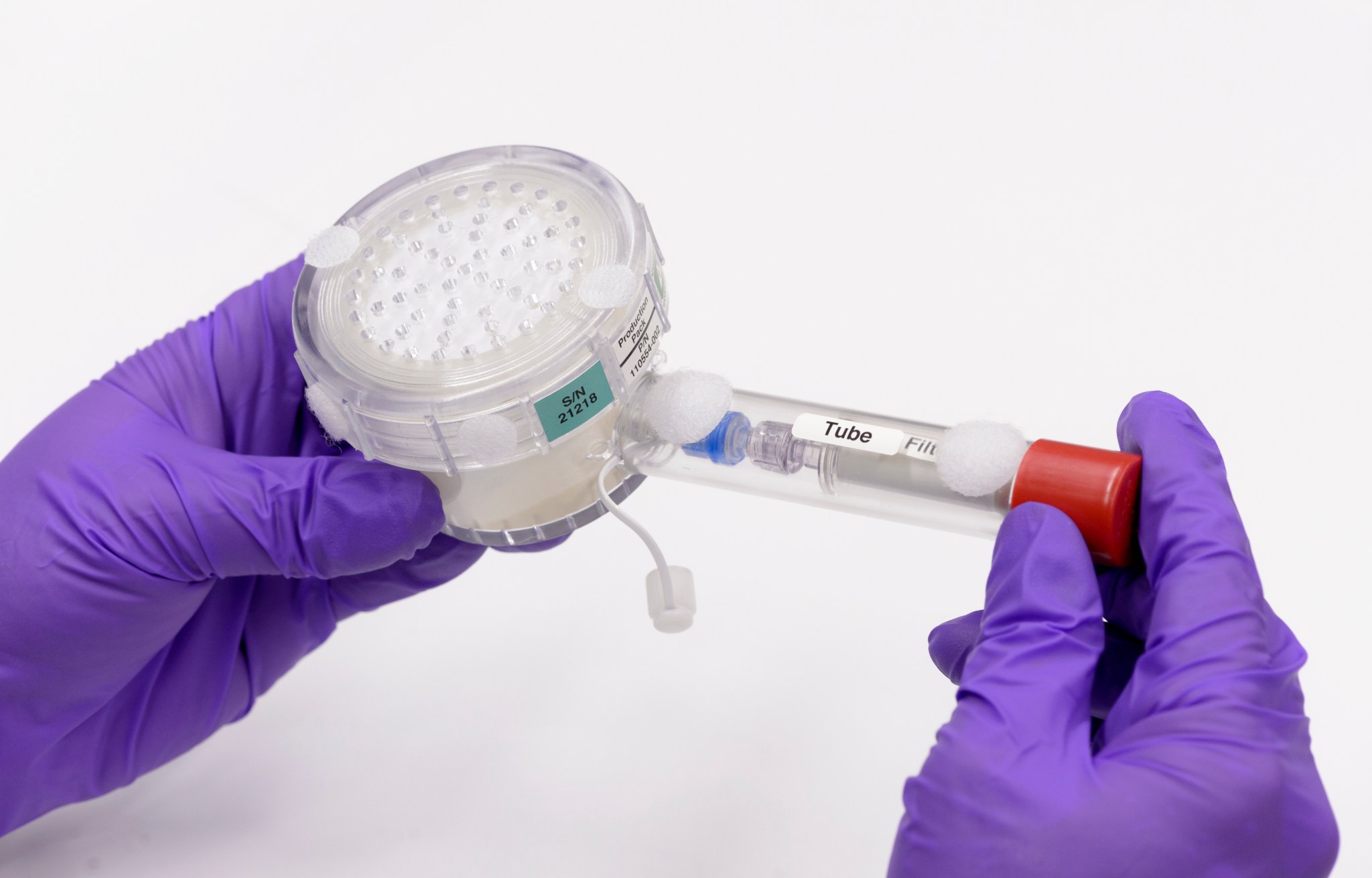
Editor’s note: This article was updated on Aug. 19, 2025, to clarify which BioNutrients experiments in the series are completed and adds new information about the upcoming experiment, BioNutrients-3.
In the future, NASA’s long-duration human exploration missions to the Moon and Mars will require minimizing the amounts of supplies launched, increasing reuse and recycling, and using local resources to make crucial products for crew during spaceflight. Certain supplies, such as vitamins, have a limited shelf life and are most effective freshly made. To meet these needs, NASA is developing technologies to biomanufacture valuable products on-demand.
Sailors might have avoided scurvy if NASA had been around in the age of exploration on the high seas. The condition is caused by a vitamin C deficiency, and many people died from spending months at sea without fresh fruits and vegetables. In the age of exploration into deep space, astronauts, too, will need a way to get the right nutrition. Planning new ways to supply food for a multi-year mission on the Moon or Mars may require making food and nutrients in space. NASA scientists are testing an early version of a potential solution: get microorganisms to produce vital nutrients so that, whenever they’re needed, astronauts can drink them down. The same kind of system designed for space also could help provide nutrition for people in remote areas of our planet.
Microbial Nutrient Factories
With an experiment called BioNutrients-1 – the first of a series of studies, that was launched to the International Space Station in April 2019 – astronauts aboard the orbiting lab helped test a new system over the course of nearly six years. BioNutrients-1 was developed by scientists at NASA’s Ames Research Center in California’s Silicon Valley using this strategy: take a safe organism already present in our food (in this case, baker’s yeast), modify it so that it produces an essential nutrient, and build the right hardware to let astronauts grow the yeast in space. Like tiny living factories, the microorganisms will go about making the desired product. The nutrients that the yeast will produce in this experiment are called beta carotene and zeaxanthin. These are antioxidants usually found in vegetables, and they’re critical for keeping our eyes healthy.
Although astronauts on the space station did not consume anything for the BioNutrients-1 experiment, they conducted multiple rounds of tests on the system. For each test, they added sterile water to a mixture of dehydrated yeast and its powdered food source, mixed well and kept the packets warm for 48 hours. Then, they froze the samples to be analyzed later, back on Earth. NASA scientists checked how the system performed, including how much yeast grew in the packets and how much nutrient the experiment produced.
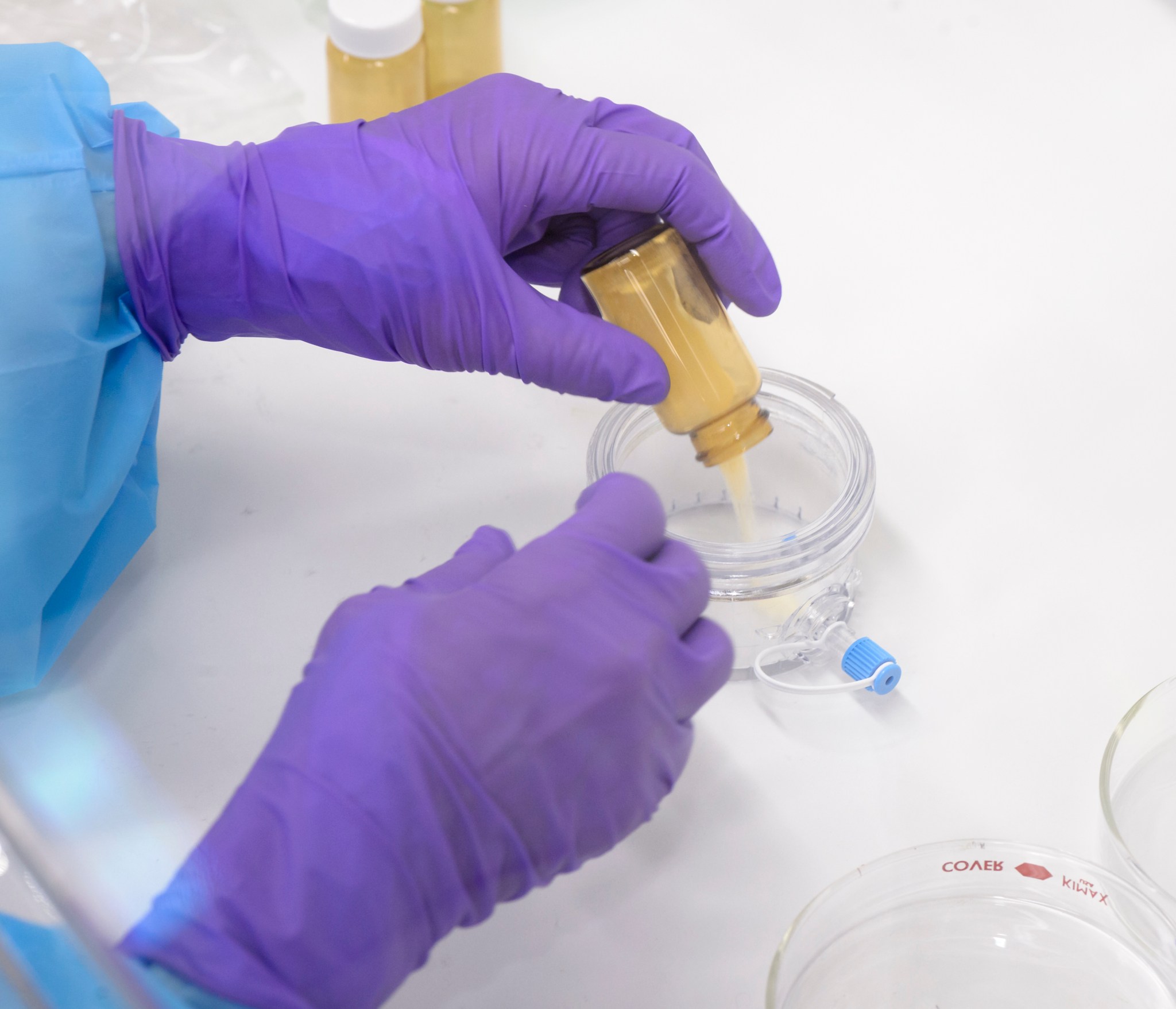
Essential (Nutrients) for Exploration
An on-demand nutrient production system like this will be vital for human exploration, because it may not be possible to provide complete nutrition from stored foods during a multi-year mission. What’s more, even with a supply of nutritional supplements, many nutrients have a limited shelf life. Some things, like vitamins, also work better in their fresh form than in a processed tablet.
Space station crew members performed tests on different yeast types, periodically, over the course of the BioNutrients-1 experiment. This allowed scientists to check how long their specially engineered yeast stays good on the shelf and able to churn out fresh nutrients that humans will need to stay healthy in space.
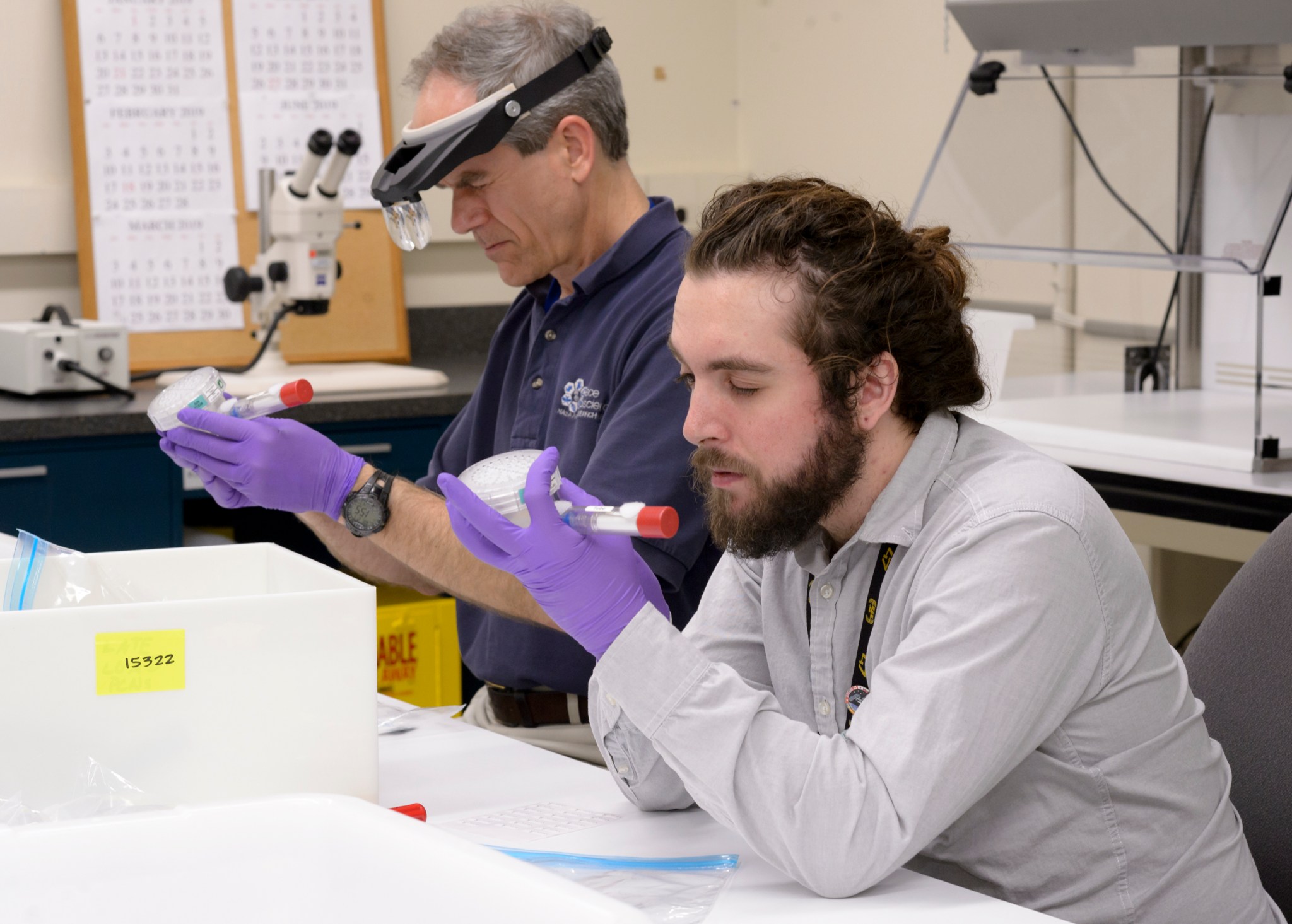
The BioNutrients-1 system tested two types of yeast with different “lifestyles” in the nutrient-production packets. One makes spores as part of its lifecycle. Spores are a dormant form of microorganisms that are highly stable and radiation tolerant. The microorganisms must maintain viability when stored for long durations – potentially in the high-radiation deep space environment – so spores are likely the optimal form for storage. Yeast in this form should stay stable for at least five years, thereby providing a reasonable “shelf life” for use during long-term human exploration missions on the Moon or to the surface of Mars.
The other yeast species does not form spores; they flew as vegetative – or metabolically active – cells, which are expected to have a shorter shelf life than spores. However, scientists are interested in this type for other reasons. People are widely consuming this same yeast in the form of commercially available probiotic supplements. More yeast species, of this same “active” type, are available to scientists for potential use in future nutrient production systems, so understanding how they work could be important for the research.
As an additional part of the BioNutrients-1 investigation, the researchers studied the shelf life of other types of microorganisms – different from the two types of yeast tested in the production packs – to track how well the various organisms function during the planned five-year span in space, and what genetic features allow them to survive for the long haul. Samples of these specially prepared biomanufacturing and probiotic microorganisms were stored on the station and periodically returned to Earth for analysis. As of May 2025, some of the returned samples still show viability beyond five years.
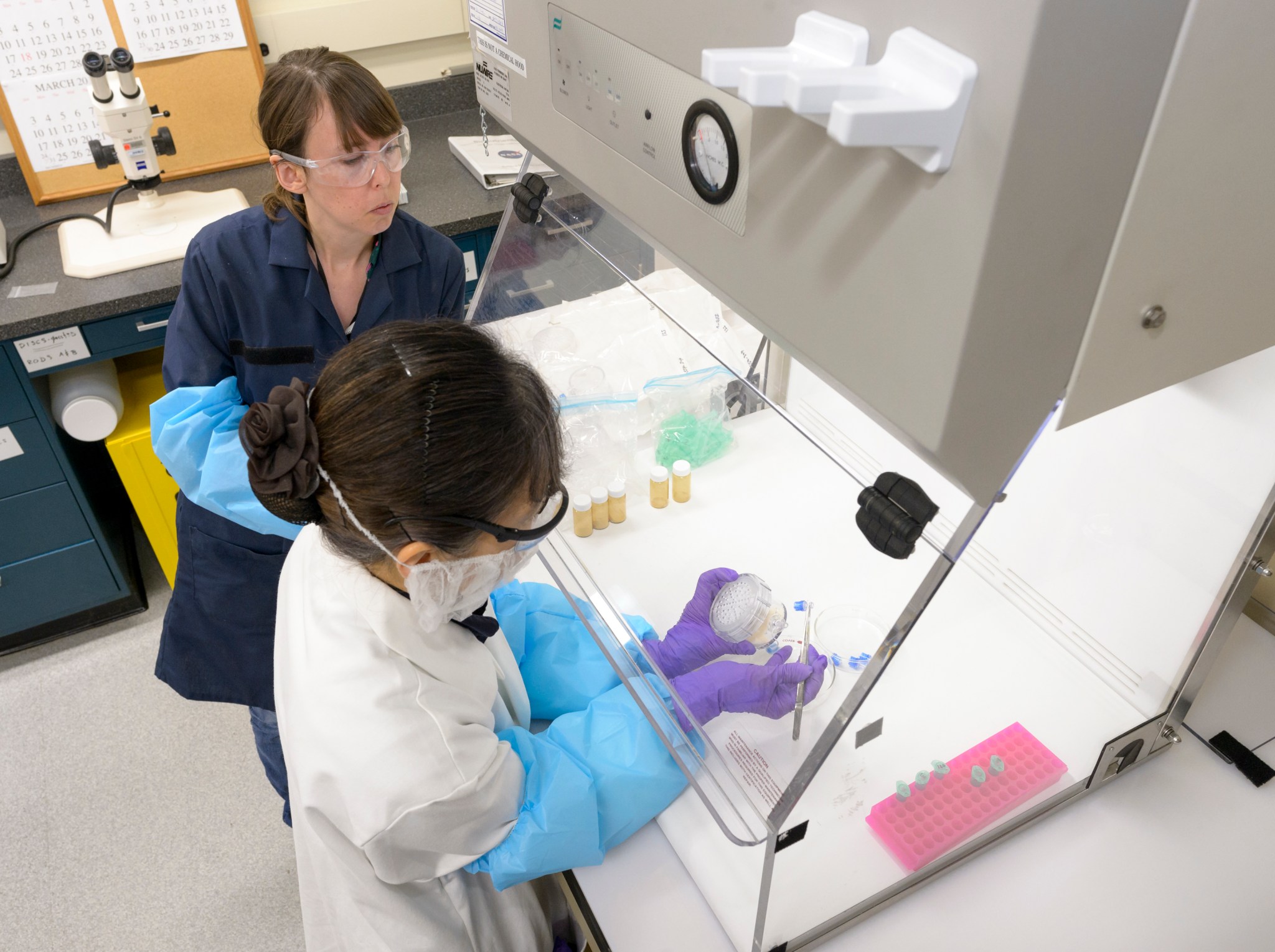
BioNutrients-2
The BioNutrients-2 investigation launched to the space station in November 2022. This phase of the study built on early results from BioNutrients-1 and incorporated several new features. The overall goal was to test an on-demand system to produce specific amounts of key nutrients using minimal equipment.
BioNutrients-2 broadened the types of microorganism being tested. It used the same two yeast strains used in BioNutrients-1 and added four new types. This includes two microorganisms that produce yogurt, one that produces a fermented milk product known as kefir, and another type of yeast specially prepared to produce follistatin, a protein linked to maintaining muscle mass.
The entire range of microorganism types were tested in BioNutrients-2’s new hardware. The system uses lightweight, flexible bags – a form factor comparable to existing crew food products – rather than the rigid containers being tested for BioNutrients-1. This change reduced the mass and the volume of the system, offering advantages for long duration spaceflight when volume and mass are limited.
Two experiment runs were performed for each sample type: the first in January 2023, approximately 45-60 days after launch, and the second in May 2023, approximately six months after launch. During each run a crew member aboard the space station retrieved four bags of a given sample type, added water, agitated the bags to mix the contents, and placed the bags in an incubator to promote growth. At the end of the run, the crew removed the bags from the incubator and froze them. The bags were later returned to Earth, still frozen, for analysis.
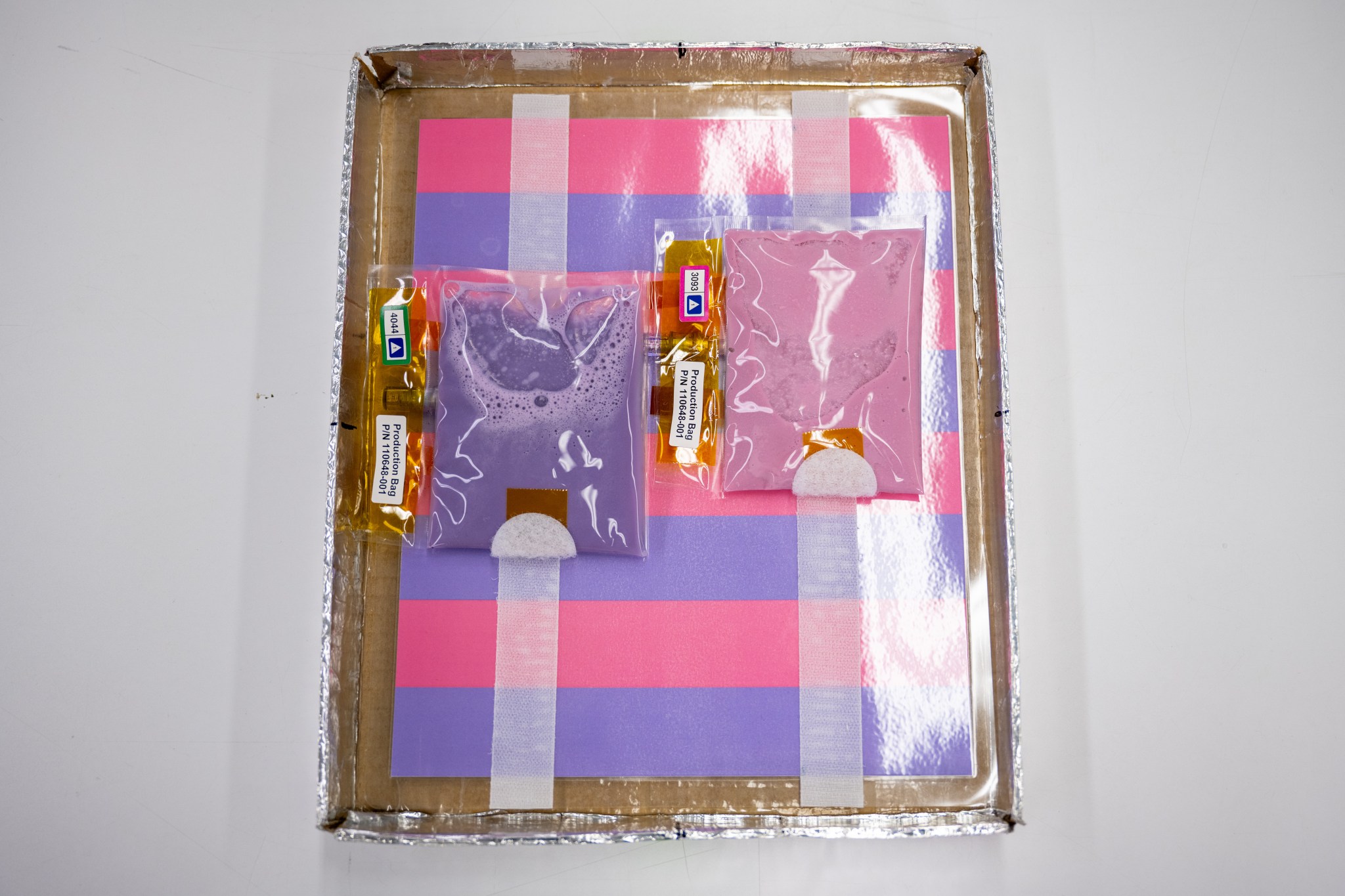
BioNutrients-3
The BioNutrients-3 investigation is planned to launch to the space station in August 2025 aboard NASA’s SpaceX CRS-33 mission. This experiment builds on results from the BioNutrients-1 and BioNutrients-2 investigations and incorporates new food safety features.
This project aims to develop a platform biomanufacturing technology that demonstrates microbial production of targeted nutrients for long-duration space missions. The concept is similar to making familiar fermented foods, such as how milk – transformed by bacteria – becomes yogurt. But in this case, there is a focus on the production of very specific quantities and qualities of nutritious products using substantially less time and infrastructure than traditional crop-based production methods.
BioNutrients-3 uses production bags similar to BioNutrients-2, but larger in size to accommodate an increased sample volume needed for food safety testing. This study includes the same commercial yogurt and kefir starters used in BioNutrients-2 and adds yeast strains that have been bioengineered to produce multiple nutrients in a single bag.
Additionally, for BioNutrients-3, the growth substrate – the ingredients needed to sustain the microorganisms as they grow, including a color-changing indicator of the level of acidity in yogurt and kefir samples – is fully edible. Although crew will not be consuming BioNutrients-3 samples, eventually such products may be consumed by crew in future investigations.
This color-changing indicator of acidity naturally occurs in red cabbage. The indicator allows a way to visually track fermentation progress. As the yogurt and kefir cultures ferment, the level of acid rises, and the color seen in the mix changes from purple to pink.
As in previous BioNutrients experiments, station crew will add water to each production bag and agitate the bags to mix the contents. Crew will visually compare yogurt and kefir samples to a color reference scale before placing the bags into an incubator. Depending on the sample type, the incubation duration ranges from six to 48 hours with intermediate visual inspections and/or agitation time points.
After crew remove the bags from the incubator, they will perform additional steps on some of the samples including pasteurization to kill microorganisms in the sample using the space station galley’s food warmer and a demonstration of the feasibility of using a NASA sensor called “electronic nose” – E-Nose, for short. The sensor simulates an ultra-sensitive nose and can be used to detect pathogens. Additionally, crew will test a technique for culturing yogurt by using a bit of yogurt from a finished bag to seed a new batch, much like maintaining a sourdough bread starter.
After conclusion of operations, all samples will be frozen and returned to Earth for analysis.
Making Molecules and Medicines in Remote Places
This technology NASA is developing for future astronauts could also be used by people living in remote areas on Earth today. Results from the study will tell NASA scientists a lot about how to produce other molecules that will be critical for human health in space, including medicines for treating various ailments. Promising research is under way now to use microbes in a range of space applications. By developing microorganisms that can withstand long periods of inactivity and be revived successfully, BioNutrients is taking steps toward making that future a reality.
Milestones:
BioNutrients-1
- April 2019 – The BioNutrients-1 experiment launched to the space station aboard NASA’s Northrop Grumman 11th commercial resupply services (CRS-11) mission
- June 2019 – BioNutrients-1 samples returned to Earth aboard NASA’s SpaceX CRS-17 mission.
- June 2019 – The first experiment run of BioNutrients-1 packs in space was completed by Canadian Space Agency astronaut David Saint-Jacques.
- August 2019 – BioNutrients-1 samples returned to Earth aboard NASA’s SpaceX CRS-18 mission.
- January 2020 – BioNutrients-1 samples returned to Earth aboard NASA’s SpaceX CRS-19 mission.
- January 2020 – The second experiment run of BioNutrients-1 packs in space was completed by NASA astronaut Andrew Morgan.
- April 2020 – BioNutrients-1 samples returned to Earth aboard NASA’s SpaceX CRS-20 mission.
- January 2021 – BioNutrients-1 samples returned to Earth aboard NASA’s SpaceX CRS-21 mission.
- January 2021 – The third experiment run of BioNutrients-1 packs in space was completed by NASA astronaut Shannon Walker.
- July 2021 – BioNutrients-1 samples returned to Earth aboard NASA’s SpaceX CRS-22 mission.
- January 2022 – BioNutrients-1 samples returned to Earth aboard NASA’s SpaceX CRS-24 mission.
- February 2022 – The fourth experiment run of BioNutrients-1 packs in space was completed by NASA astronaut Thomas Marshburn.
- August 2022 – BioNutrients-1 samples returned to Earth aboard NASA’s SpaceX CRS-25 mission.
- January 2023 – The fifth experiment run of BioNutrients-1 packs in space was completed by JAXA astronaut Koichi Wakata.
- January 2023 – BioNutrients-1 samples returned to Earth aboard NASA’s SpaceX CRS-26 mission.
- March 2023 – BioNutrients-1 samples returned to Earth aboard NASA’s SpaceX Crew-5 mission.
- June 2023 – BioNutrients-1 samples returned to Earth aboard NASA’s SpaceX CRS-28 mission.
- December 2023 – BioNutrients-1 samples returned to Earth aboard NASA’s SpaceX CRS-29 mission.
- January 2024 – The sixth experiment run of BioNutrients-1 packs in space was completed by JAXA astronaut Satoshi Furukawa.
- February 2025 – The seventh experiment run of BioNutrients-1 packs in space was completed by NASA astronaut Suni Williams.
BioNutrients-2
- November 2022 – The BioNutrients-2 experiment launched to the station aboard NASA’s SpaceX CRS-26 mission.
- January 2023 – The first experiment run of BioNutrients-2 was completed by NASA astronauts Nicole Mann, Josh Cassada, and Frank Rubio.
- January 2023 – BioNutrients-2 samples returned to Earth aboard NASA’s SpaceX CRS-26 mission.
- April 2023 – BioNutrients-2 samples returned to Earth aboard NASA’s SpaceX CRS-27 mission.
- May 2023 – The second experiment run of BioNutrients-2 was completed by NASA astronaut Warren Hoburg and UAE astronaut Sultan Alneyadi.
- June 2023 – BioNutrients-2 samples returned to Earth aboard NASA’s SpaceX CRS-28 mission.
Partners:
BioNutrients was developed by NASA Ames. The Game Changing Development program within NASA’s Space Technology Mission Directorate manages the project, which is part of a larger synthetic biology portfolio. Additional support is provided by Exploration Systems Development Mission Directorate as part of Exploration Capabilities. The project was previously funded by NASA’s Advanced Exploration Systems program within the Human Exploration Operations Mission Directorate.
Learn more:
- NASA’s SpaceX Crew-11 Mission Gears Up for Space Station Research (NASA story, July 2025)
- NASA Continues BioNutrients Space-Fermented Food Research (NASA featured image, March 2025)
- BioNutrients: A Five-Year Experiment in Space Nears Completion (NASA story, January 2024)
- JAXA Astronaut Koichi Wakata Performs BioNutrients-1 Run 5 (NASA Image Library, January 2023)
- Astronaut Josh Cassada works on the BioNutrients-2 investigation (NASA featured image, January 2023)
- Astronaut Nicole Mann works on the BioNutrients-2 investigation (NASA featured image, January 2023)
- Cutting-edge Experiments Ride SpaceX’s 26th CRS Mission to Space Station (NASA story, November 2022)
- A Fresh Take: NASA BioNutrients for Future Artemis Missions (NASA featured image, March 2022)
- NASA Astronaut Shannon Walker Performs BioNutrients-1 Run 3 (NASA Image Library, January 2021)
- A Space Traveler’s Recipe for Sweet Potato Pie? (NASA featured image, November 2019)
For researchers:
- BioNutrients-1 – International Space Station technical mission page
- BioNutrients-1 – Technical experiment page, NASA Ames Space Biosciences division
- BioNutrients-2 – International Space Station technical mission page
- BioNutrients-3 – International Space Station technical mission page
- Space Synthetic Biology (SynBio) project, technical page
For news media:
Members of the news media interested in covering this topic should reach out to the NASA Ames newsroom.